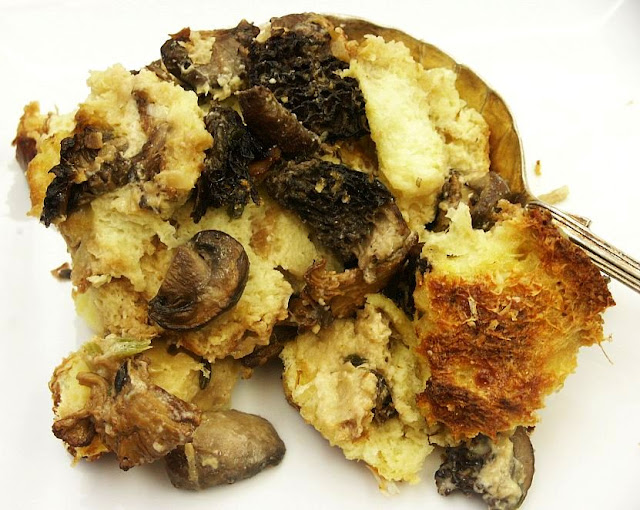It's that time of year. At long last persimmons are making their appearance in the markets around here. It's such a short season too- you've only got two months to buy them and work magic with them. You'll find two kinds to choose from: fuyu, the kind you can eat right away and hachiya, the kind you can't. The latter has to ripen. A lot. It takes time so you gotta be patient.
Fuyu persimmons look rather like a yellow tomato and you can eat them right away like an apple or a pear. A squeeze of lime perks up their flavor even more and they're wonderful with vanilla yogurt. Use them in fruit salads, cobblers, or crisps; they don't darken when cut, so they can be sliced and made part of a vegetable or fruit tray. Fuyu persimmons represent almost 80 % of the persimmon market.
Fuyu Persimmons
Then we have the hachiya...the one you want to bake with. They need to be bright orange and very ripe, mushy even. If you bite into an unripe hachiya, it's like you just drank six cups of extra strong tea. Mouth-puckering. It's the result of the high level of tannin in the fruit. So don't even try to taste an unripe hachiya- it'll ruin them for you. Wait. It's worth it. Like most unripe fruit, you can hasten the ripening by placing them in a paper bag with an apple or banana and keep checking.
But the best strategy is to be patient.
Hachiya Persimmons
Hachiya persimmons are very stubborn and a bunch of them will often refuse to ripen at the same time. But the good news is you can freeze their pulp as each one ripens to make a stash of purée. You can also pop whole ripe persimmons into the freezer to deal with at your leisure. A fully ripe hachiya persimmon is supple and yielding, like a breast and the skin takes on a translucent hue. This is the time to get into the marmalade-like pulp inside. The nature of the hachiya persimmon is such that it is almost always used as a purée, in cookies, cakes, brownies, breads, puddings, flans, and sauces.
After I patiently ripened my persimmons (I still have 3 firm ones left), I cut them in half and scooped the pulp out and into my food processor. There was a seed in two, but not in the others. The seed was thin, black and rather like a small date pit. According to weather folklore, the seeds can be used to predict the severity of winter weather. When cut into two pieces, the persimmon seed will display one of three symbols. A knife shape indicates a cold icy winter (where wind will cut through you like a knife). A fork shape means a mild winter. A spoon shape stands for a shovel to dig out of the snow. Can't be any more or less accurate than a groundhog can it?
This bread is addictive- and no, not just because it has booze in it! The flavor is unusual and delightful. Persimmons don't taste like any other fruit so I really have nothing to compare it with....maybe mango? Anyway- I used cranberries (love the color of them in the bread) and pecans but you can use any dried fruit and try any kind of nut. There are so many recipes using persimmon pulp; check out just a few:
Persimmon Bread
(Adapted from from Beard on Bread by James Beard)
Ingredients:
3½ cups sifted flour
1½ teaspoons salt
2 teaspoon baking soda
1 teaspoon ground nutmeg
2 ½ cups sugar
1 cup melted unsalted butter and cooled to room temperature
4 large eggs, at room temperature, lightly beaten
2/3 cup cognac, bourbon or whiskey
2 cups persimmon puree (from about 4-5 squishy-soft Hachiya persimmons)
2 cups walnuts or pecans, toasted and chopped
2 cups raisins, or diced dried fruits (such as apricots, cranberries, or dates)
Method:
(This recipe makes two 9" loaves or 4 mini loaves)
Butter your loaf pans and sprinkle with fine bread crumbs. Tap out excess.
Preheat your oven to 350°.
To make persimmon puree: scoop the pulp out of very mushy persimmons and puree in your processor.
Sift the first 5 ingredients into a large bowl and make a well in the center. Add the remaining ingredients in order and mix well. Pour into your loaf pans and bake for one hour or until a toothpick comes out clean.
Storage: Will keep for about a week, if well-wrapped, at room temperature. The persimmon bread takes well to being frozen, too. I keep mine in the fridge- makes it easier to cut.



















